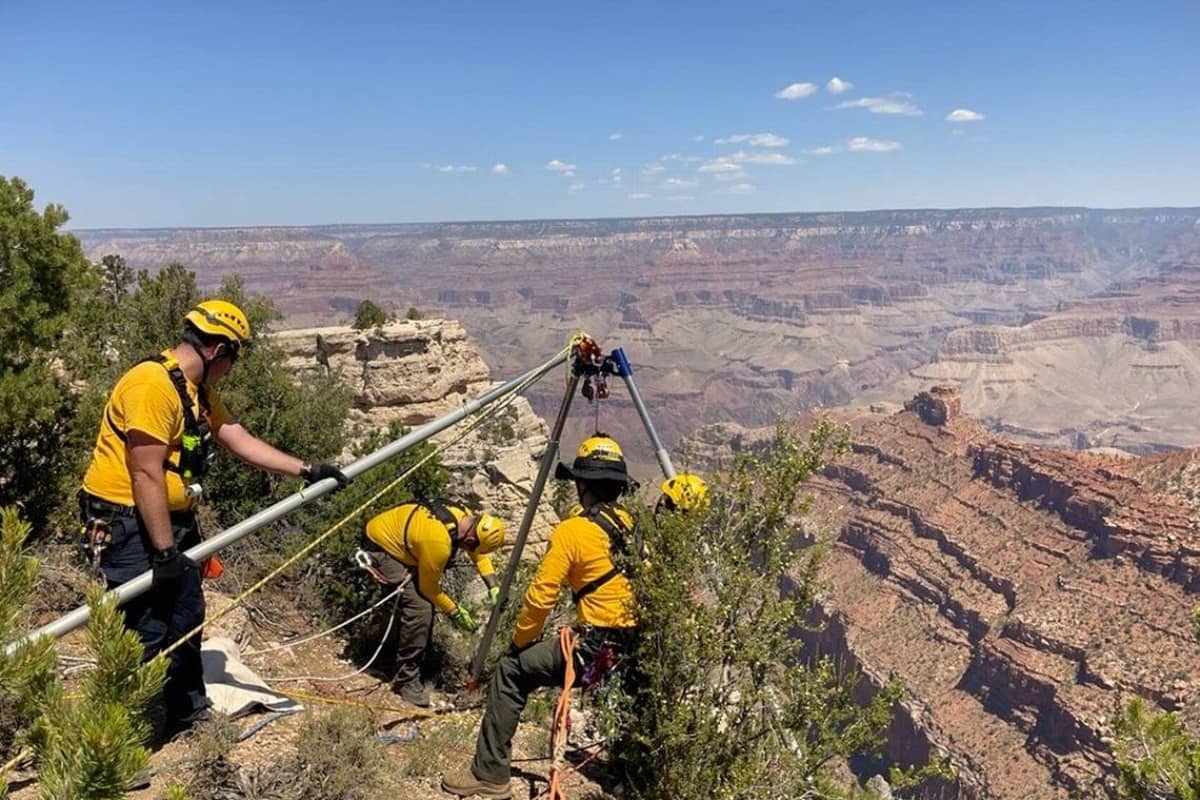The Grand Canyon, with its vast expanse and dramatic vistas, is a place of wonder that draws millions of visitors each year. As someone who has experienced its awe-inspiring beauty firsthand, I can say that it’s a destination that leaves a lasting impression. But along with its breathtaking views comes an inherent risk, one that many visitors, unfortunately, do not fully appreciate until it’s too late.
During my time at the Grand Canyon, I was struck by the number of people who seemed oblivious to the dangers around them. It was not uncommon to see tourists climbing over safety railings, standing mere inches from the edge of a 1,000-foot drop, or even posing for selfies in precarious positions. The desire to capture the perfect photo often seems to outweigh the very real risks associated with such behavior.
One particular memory that stands out is watching a family inch closer and closer to the edge, backing up with young children in tow, in order to get a better shot of the canyon. The ground beneath them was loose gravel, and the cliff was unforgivingly steep. My heart was in my throat as I watched, knowing that a single misstep could lead to disaster. It’s moments like these that serve as a grim reminder of how easily things can go wrong in such an environment.

Tragically, these fears are not unfounded. On July 31, 2024, Abel Joseph Mejia, a 20-year-old college student from Hickory, North Carolina, lost his life at the Grand Canyon. Mejia, a student at Indiana Bible College, was on a mission trip when he accidentally fell 400 feet to his death near the Pipe Creek Overlook. According to the National Park Service, he was standing near the edge of the rim when he plunged into the canyon. His death serves as a stark reminder of the dangers that the Grand Canyon poses, even to those who are careful.
Mejia’s story is particularly heartbreaking. Described as having a “gentle spirit” and a warm smile, he was well-liked by those who knew him. His untimely death left a void in his community and serves as a somber warning to others. The Grand Canyon is not a theme park; it is a wild, natural environment where one wrong move can have fatal consequences.
Unfortunately, Mejia’s tragic accident is not an isolated incident. The Grand Canyon has a long history of accidents, many of which result from visitors underestimating the dangers or overestimating their abilities. In 2023 alone, over 4.7 million people visited the Grand Canyon National Park. While the vast majority of these visitors left safely, the park averages about 12 fatalities per year. These deaths are often the result of falls, dehydration, or heat stroke, and many could be prevented by following the park’s safety guidelines.
The National Park Service advises visitors to stay at least 6 feet away from the edge of the canyon and to remain on designated pathways and trails. Yet, time and time again, people ignore these warnings, often in pursuit of the perfect photo or a more thrilling experience. It’s a dangerous game of chance, one that far too many people are willing to play.
This reckless behavior isn’t limited to just the Grand Canyon. Other national parks, like Yosemite and Yellowstone, have seen similar incidents. Visitors often disregard safety barriers, climb over fences, or venture into restricted areas, putting themselves and others at risk. In some cases, these actions have not only resulted in injury or death but have also endangered rescue personnel who are tasked with retrieving those who have fallen.
The psychology behind this behavior is complex. Some people may be driven by a sense of invincibility, believing that nothing bad will happen to them. Others may be motivated by the desire to stand out on social media, where the perfect photo can garner likes and followers. But whatever the motivation, the outcome can be deadly.
There’s also the issue of visitors underestimating the physical challenges posed by the Grand Canyon. Hiking in the canyon is not a casual stroll; it requires preparation, stamina, and respect for the environment. The heat can be intense, especially in the summer, and dehydration is a constant threat. Yet, some visitors set out with little more than a bottle of water and a sense of adventure, only to find themselves in dire situations.
For those planning to visit the Grand Canyon, or any other natural wonder, it’s important to remember that these places are beautiful but unforgiving. Safety guidelines are there for a reason, and they should be followed diligently. No photo, no thrill, and no social media post is worth the risk of injury or death.
In reflecting on my own experiences and the tragic stories I’ve come across, I’ve come to realize that the beauty of the Grand Canyon is matched only by its potential for danger. It’s a place that commands respect, a place where one should tread carefully and be constantly aware of their surroundings. The loss of young lives like Abel Joseph Mejia’s is a reminder that nature, while awe-inspiring, must be approached with caution and humility.
The Grand Canyon will continue to be a destination for millions, but let it also be a place where safety is taken seriously, where visitors understand the risks and make choices that honor the lives of those who have been lost.






